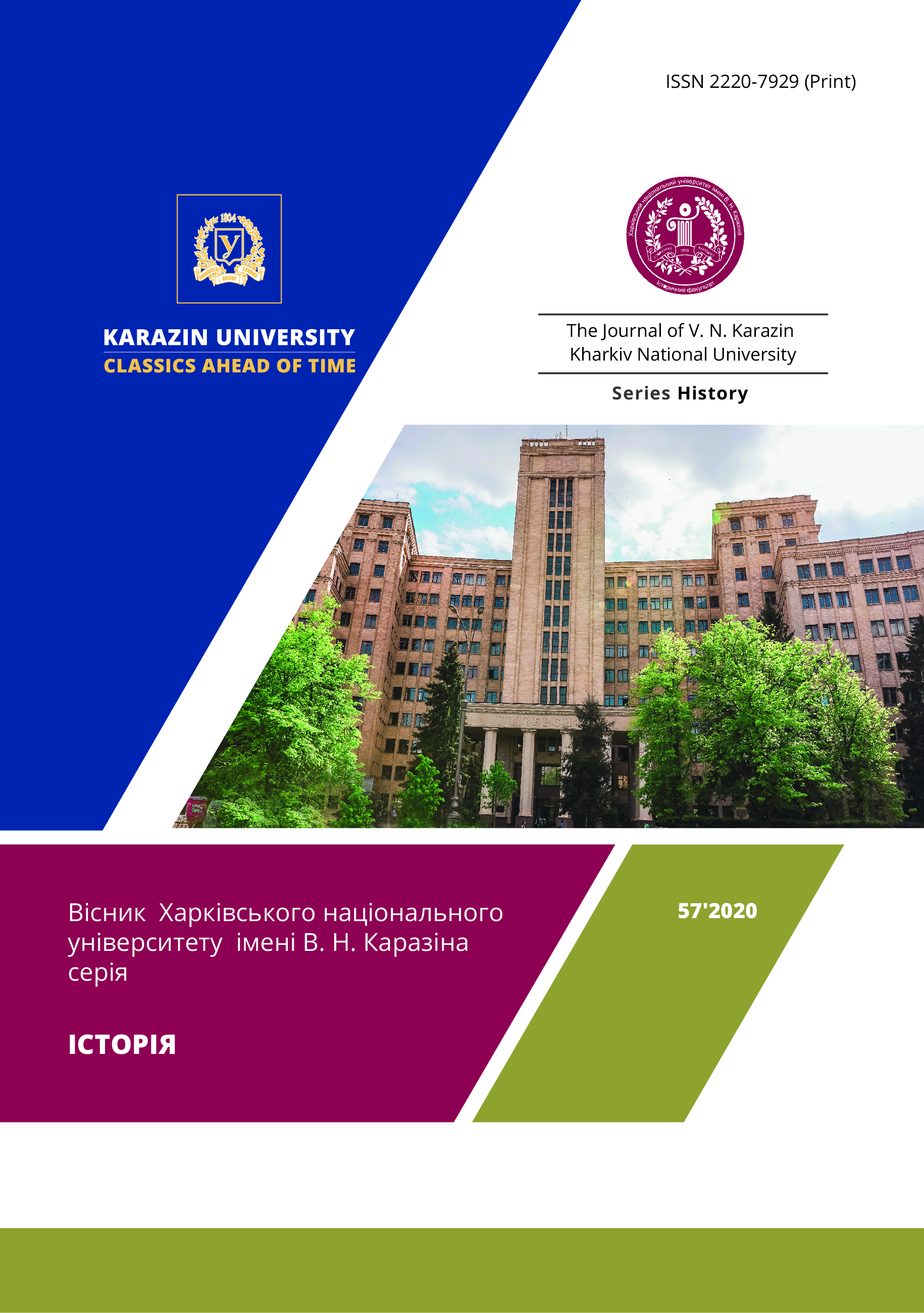Features of Perception of the City of Kharkiv by Foreign Students (According to the Questionnaire)
Abstract
In the article the author analyzes the results of the survey of foreign students in Kharkiv. 182 students from 10 countries were interviewed. The survey was conducted exclusively among students of the first year of study, however, some of the respondents have the age in the range of 20 to 25 years, which can be equated to 3-5 courses of Ukrainian students. On the example of foreign students of Kharkiv National University, the author explores the intercultural sensitivity and perception of foreigners of Ukrainian city. International students have been found to have some knowledge of the city, which is shaped by the process of comparison with their experience. For the foreign students, Kharkiv is primarily a student city. It is noteworthy that, in most cases, students who called Kharkiv a "student city" consider it a typical "Ukrainian city". This may also indicate their perception of Ukraine in general. Despite the answer about good orientation in the city, the majority of the respondents had difficulty identifying a specific object or monument that forms a certain "face of the city". The questioning shows that they have very limited city traffic. For the most part, they refer to the city's face as the V. N. Karazin Kharkiv National University. Obviously, the knowledge of these students in the surrounding urban space is very low. A large number of students (based on the experience of their culture) prefer to communicate in their own environment and are not inclined to learn about the features of the city. Therefore, the question remains how to help students move to new levels of understanding of urban space and minimize the "cultural shock" by including them in urban space. The study of the specificity of the perception of the city by foreign residents is one of the variants of the study of intercultural communication, which increasingly determines the face not only of a city, but also of our time.
Downloads
References
Bennett, M. The Developmental Model of Intercultural Sensitivity. 2014. Available at:
Bierwiaczonek, K., Waldzus, S. Socio-Cultural Factors as Antecedents of Cross-Cultural Adaptation in Expatriates, International Students, and Migrants: A Review. Journal of Cross-Cultural Psychology, no. 47 (6), 2016, pp. 767–817.
Бочева, Г., Бондаренко, О., Холондович, І. Іноземні студенти в Україні: освіта чи експлуатація? 2011. Available at:
Бондаренко, А. Африканські студенти у Львові: інтерв'ю з дослідницею Мішель Голдхабер. Варіанти, 2015. Available at:
Galchenko, I., Vijver, van de F. J. R. The Role of Perceived Cultural Distance in the Acculturation of Exchange Students in Russia. International Journal of Intercultural Relations, no. 31 (2), 2007, pp. 181-97.
Юркіна, В. Сповідь іноземця: як це – жити й навчатися в Україні? 2015. Available at:
Кравчук, А. Злочини та інциденти ненависті в Україні. Київ, 2018.
Лисак, О. Б. Освіта іноземців в Україні: сучасний стан, проблеми та маркетинговий погляд на шляхи їх подолання. Вісник Вінницького політехнічного інституту, № 4, 2016, c. 102-7.
Матеріали Міжнародної XXIII-ї науково-практичної конференції «Викладання мов у закладах вищої освіти на сучасному етапі» (м. Харків, 6-7 червня 2019 р.). Харків.
Матеріали IV-ї Міжнародної науково-методичної конференції «Актуальні питання організації навчання іноземних студентів в Україні» (м. Тернопіль, 2-4 травня 2018 р.). Тернопіль.
Моргунова, Н. Форми та засоби соціокультурної адаптації іноземних студентів до умов навчання в Україні: практичні аспекти реалізації. Наукові праці Чорноморського державного університету імені Петра Могили комплексу "Києво-Могилянська академія," № 232, 2014, c. 36-9.
Ward, C., Bochner, S. and Furnham, A. The Psychology of Culture Shock. 2001. Available at:
Zhou, Y., Jindal-Snape, D., Topping, K. and Todman, J. Theoretical Models of Culture Shock and Adaptation in International Students in Higher Education. Studies in Higher Education. no. 33, 2008, pp. 63-75.
Copyright (c) 2020 Bondarenko A. A.

This work is licensed under a Creative Commons Attribution 4.0 International License.
Authors who publish with this journal agree to the following terms:
- Authors retain copyright and grant the journal right of first publication with the work simultaneously licensed under a Creative Commons Attribution License that allows others to share the work with an acknowledgement of the work's authorship and initial publication in this journal.
- Authors are able to enter into separate, additional contractual arrangements for the non-exclusive distribution of the journal's published version of the work (e.g., post it to an institutional repository or publish it in a book), with an acknowledgement of its initial publication in this journal.
- Authors are permitted and encouraged to post their work online (e.g., in institutional repositories or on their website) prior to and during the submission process, as it can lead to productive exchanges, as well as earlier and greater citation of published work (See The Effect of Open Access).




